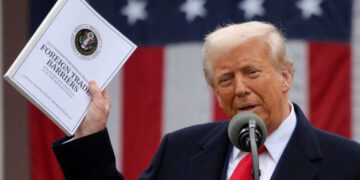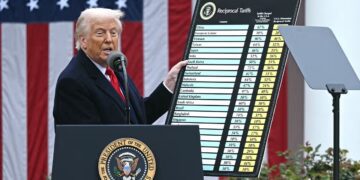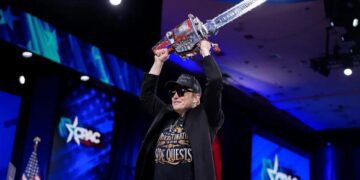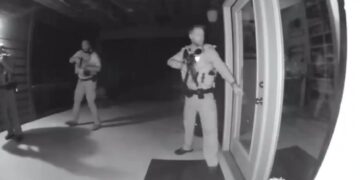By John F. Di Leo -
For at least two hundred years, one of the goals of the retail industry has been to make shopping fun – to make a trip to the general store, or the downtown retail district, or the indoor mall an enjoyable, even entertaining experience.
Stores are designed with an eye to bright colors and comfortable surroundings. Malls have been built with stages in the wings, so they could bring in high school choirs for Christmas caroling, or personal appearances by pop stars or children’s TV performers. Department stores like Nordstrom’s, and grocery stores like Mariano’s spend the money for both a fine piano and a live pianist to entertain the shoppers as they go by.
None of these measures really add anything to the value of that pair of earrings or cufflinks, that candelabra or easy chair, that case of wine or bag of groceries for which you came.
But these various forms of decoration and entertainment work together to draw you to that store or mall in the first place, and then to inspire you to stay and shop some more. And the longer and more frequently you’re there because you’re comfortable, the more you’ll buy. A win-win, for both the store itself and the economy at large.
The Hammering of Retail
Now let’s think about what has happened to the process of shopping in recent years.
After centuries of efforts to make shopping easier, more fun, more entertaining, there’s been a sudden transformation in the other direction.
Some of it is based on crime. Due to destructive leftist policies in our big cities, both downtowns and suburban malls have become dangerous, scaring customers away, often permanently, doing unimaginable damage to the retail sector.
The computerization of the purchasing process, which should have made shopping easier, has also made it more dangerous, as hackers put shoppers in fear of identity theft and the destruction of personal credit ratings through fraudulent purchases.
And the internet, while introducing ease for the homebound and the busy, has done even more damage in a way, by removing the critical, tangible step of comparing products in person, leaving people at risk for regretting decision after decision, because, that online purchase didn’t turn out to be as good as the picture onscreen.
Worse, while hurting the consumer directly by the increased odds of online purchases turning out different than expected, the transition to internet commerce has done untold damage to the brick-and-mortar stores on which our economy was based.
We don’t just need our malls for shopping… we need them because they are a source of so much that we cannot get elsewhere. Retail is a good career for those who go into management, it’s a decent second job for those who don’t, and it’s a critical first job for almost everyone else. How many of our resumes start off with a high school or college part time job, either after school or during summers and holidays, as a clerk at the local department store or grocery, or at the mall’s pet food or electronics store?
For most American youths, it’s our first experience with showing up on time, working with the public, handling money, showing that we’re responsible with property, with money, with our assigned duties.
But retail has been taking a beating for years, and this crucial part of our lives – the start of so many of our careers – has been slowly ebbing away, no longer an option for more and more of our children and grandchildren. What will be our kids’ first jobs, when this plethora of options are gone?
And now, the world of shopping has taken yet another hit, this one totally a 2020 phenomenon.
The Joy of Shopping
The 2020 pandemic caused by the CCP Virus – or, more precisely, the response to it – has done more damage than most of us acknowledge.
In addition to the obvious health crisis – thousands sickened by the virus, countless others getting sick every day with other things, but leaving issues undiagnosed for months because of the focus on the virus… and the massive economic pain – millions unemployed, countless businesses closed, pensions and retirement savings gone… the very concept of shopping itself, the basis of our economy, has been transformed.
We are now expected to wear a mask everywhere.
You can’t breathe normally, and if you wear glasses, they fog up so you can barely see. They put arrows on the floor so that you go one way down the aisles; they have supervisors to remind you not to dawdle and ponder your purchases. Since there others in line outside, taking your time to contemplate options is no longer fair.
As a result, you can rush in, uncomfortably locate what you know you need, and then check out and get out, as quickly as possible. The joy of shopping has been stolen from us.
From generations of effort to encourage people to take their time in the store, possibly to be attracted by another display, another shelf, another product line… now there’s no time for such distractions. That carefully crafted endcap, the carefully dressed mannequins, the point-of-sale impulse purchases, are now gone. There’s no time; there’s a line outside!
Some of this will change back; it isn’t all permanent. But with the effort of so many who shape both public policy and consumer opinion to change our way of shopping, some parts of this transformation will definitely stick.
While the jury is still out on whether the “social distancing” concept helps or hurts in the fight against seasonal viruses, there is no doubt how much it hurts the economy. Will we see those high school choirs and personal appearances return to our malls this fall? Will we see shoppers freely encouraged to take their time in the stores again, free to be attracted by other products that weren’t on their shopping lists? We need to. It’s imperative.
It’s not just a matter of reopening the factories and stores. It’s also about returning to the way it was: the successful, exciting, joyful experience of being surrounded by crowds of fellow buyers, spending the day downtown, going from store to mall, then to restaurant for lunch, then back to shopping in the afternoon and maybe the theater after dinner.
Millions of us have spent two months in which each purchase was a stand-alone transaction. We have sat at our computers and ordered from the grocery store, either choosing delivery or driving there for curbside pickup. If we don’t go back to the normal way soon, this drudgery will become normal for us, and that would sound a death knell for this economy.
Retail stores – and the manufacturers that supply them, and the employees who work in them – all depend on people shopping for other things, and stopping to check out a new shop just because it interested them. Both indoor and outdoor malls facilitate this. Going from Sears to Penney’s at Woodfield, or from Macy’s to the Bass Pro Shops at Gurnee Mills, requires walking past dozens of smaller stores, each of which might catch your eye, each of which might become your new favorite – but for that to happen, you have to be drawn in that first time.
This problem really didn’t start with this pandemic. It started years ago, when city politicians decided to befriend the drug gangs and let them take over the shopping districts… when confiscatory taxation drove up the prices… when a host of destructive policies drove manufacturing to foreign shores so that we no longer see the local “made in USA” products on our shelves that make a shopper excited to buy a local product and keep his neighbors employed. And it started when we began listening to politicians like Senator Bernie Sanders, who so hate the concept of “consumption” that they ridicule the availability of different brands of deodorant.
If this were just the beginning of an assault on retail, it wouldn’t be so terrifying. Two months of bad habits wouldn’t reverse two hundred years of advances.
But we’ve had years and years of assaults on the retail sector… and this latest could well be the final nail in the coffin, not only for the companies that can never reopen, but also for most of the ones that do… because the world in which they reopen may be a hostile one to the effervescent, productive retail life that America so truly needs.
As President Calvin Coolidge reminded us so often, “the business of America is business.” We need to be proud of that fact; we need to take delight in being a part of the wonderful engine of American prosperity.
We don’t just need to shop again; we need to enjoy life again.
Copyright 2020 John F. Di Leo
John F. Di Leo is a Chicagoland-based trade compliance trainer, writer and actor. He’s not only been a shopper himself, he’s been one of those high school kids, singing at the Yorktown or Fox Valley Mall at Christmas time, advertising the school play, caroling at Christmastime, invigorating the shoppers to get them to stick around and keep on shopping, never dreaming that such a basic part of Americana might one day be jeopardized.
Don’t miss an article! Use the free tool in the margin to sign up for Illinois Review’s free email notification service, so you always know when Illinois Review publishes new content!







